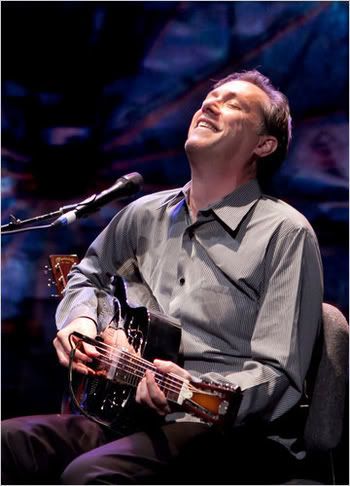
[purchase all albums in this post here]
Take a look at the picture above. That’s Mikel Rouse. He looks like he just finished playing a folk or blues song, and everything went right and the audience loved it. Maybe this was at a folk festival, you might think. Well, not exactly. Mikel Rouse looks this way nowadays, and there are certainly touches of folk and blues in what he does now. But the journey that got him here is one of the most fascinating tales I know. In introducing Rouse to you, I am limited to five songs, one from each of five albums sprinkled throughout Rouse’s career. In his case, that isn’t nearly enough. Rouse began in a band that once opened for Talking Heads, he has composed for full orchestras and chamber ensembles, and used both electronic and organic instruments, separately or in combination. Rouse is so prolific that only about half of his music has even been recorded. And there is an important side of his artistry that I am unable to present: Rouse has been not only a musician but also a film maker, and much of his music is meant to be presented with a visual component. I can tell you that Rouse’s album Quorum is a work for solo drum machine, but that’s not quite true. Quorum is the music for the Alvin Ailey American Dance Theater’s piece Vespers. The music can only be properly appreciated in combination with the choreography of Ulysses Dove and the performances of the six Alvin Ailey dancers. (You can search You Tube for video of this by looking for Alvin Ailey Vespers; the video quality could be better, but it will give you the idea.) Nevertheless, what I can share with you is a suitable taste of Mikel Rouse. I hope you will come away from this post inspired to explore further.
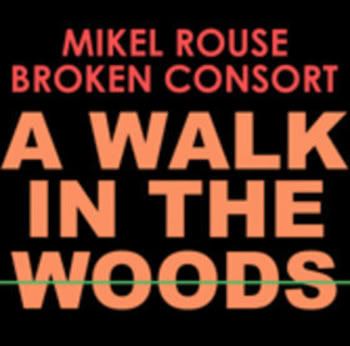
Mikel Rouse Broken Consort: Winter in Wyoming
I mentioned that Mikel Rouse once opened for Talking Heads. The band was called Tirez Tirez. I must have read about them in the New York Times, because I actually bought one of their albums back in the 1980s. Now, they are all but impossible to find. There are three songs on You Tube to give you an idea, but only one of their albums was even released on CD, and vinyl copies are in the hands of collectors. Tirez Tirez built their songs on grooves which had interlocking parts, but didn’t seem to change much in the course of a song. The vocals were high and thin, really just another instrument in the ensemble. But you could listen to a song at the beginning, and then part way through, and you would be amazed that you got from the one place to the other. This is a layman’s description of Minimalism, and, technically, there is a lot more to it. Minimalism was pioneered by Phillip Glass, and in his lengthy pieces, the changes come very slowly, and try the patience of the listener. But, in the shorter form of a pop song, time is compressed, and the gradual change becomes fascinating. Also, because of those interlocking parts I mentioned, it is possible to listen to this music from different angles as the song progresses. To my ear, this is what Tirez Tirez was after, and they largely succeeded.
But soon enough, Mikel Rouse formed his Broken Consort. The vocals are gone, and the instrumentation is a mix of classical instruments and electronic ones. Winter in Wyoming has the interlocking patterns as its foundation, but there is also a longer theme and variations on top of this. This makes the song a good introduction to the music of the Mikel Rouse Broken Consort.
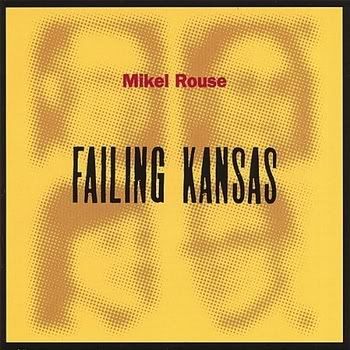
Mikel Rouse: A Brief History of My Boy‘s Life
There was a great deal of music in between, but ten years later Rouse created Failing Kansas. All of the instruments and voices you here are performed by Mikel Rouse. Failing Kansas is a work that is best appreciated as a whole, but I can only present one song. In A Brief History of My Boy’s Life, I can hear harmonica, guitar, flute, and some electronics. Rouse is still laying down an interlocking pattern, but now he is starting to find connections between Minimalism and blues. The vocals on the album are all spoken, with overdubbed voices seemingly having uneasy conversations. Boy’s Life has a definite lead vocal part, but the background vocal comes first. The traditional call-and-response is turned upside down, with the background vocal becoming a sly prod. Rouse sees the interaction of voices as part of the ensemble, and he calls this vocal technique counterpoetry. It sounds technical, and possibly off-putting, but don’t let it scare you.
Truman Capote’s In True Blood was what he called a “nonfiction novel”; it was based on a true incident, but filtered through Capote’s sensibilities. Failing Kansas, in turn, is based on In Cold Blood, and it introduces another layer of distortion. Rouse assumes that we are familiar with the original story, and that frees him to extrapolate further. Boy’s Life finds Perry Smith’s father trying to rationalize the horrifying things his son has done. The vocal technique amplifies his uncertainty, and really helps the whole song to connect emotionally.

Mikel Rouse: Beautiful Murders
Mikel Rouse called Dennis Cleveland an opera, but that may surprise you when you hear the music. It was staged, with different singers in different roles, but once again, all of the instruments and voices on the album are Mikel Rouse. Dennis Cleveland is the host of one of those TV talk shows where the audience members become participants and things sometimes get out of control. Life as presented on these kinds of shows is a distortion of the real thing. This theme of truth and distortion is one that comes up over and over in Rouse’s work. In the story of Dennis Cleveland, the talk show host is made to reexamine his own life as a result of his interactions with his guests. In performance, each of the verses of Beautiful Murders is sung by a different guest, with Cleveland and the talk show audience singing the chorus. Once again, Rouse uses the interplay of vocal parts to powerfully create dramatic tension. Musically, Rouse makes another surprising connection here, this time between Minimalism and funk.
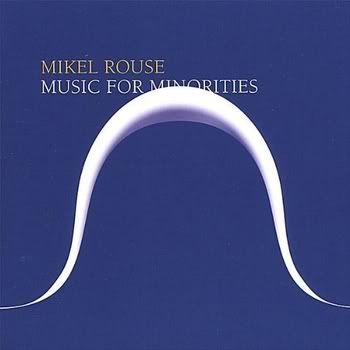
Mikel Rouse: Johnny Dollar
I am tempted to call Johnny Dollar a blues song. It certainly has that flavor. There is a bluesy guitar that is prominent in the mix. But there is also a rhythm section that is playing a part with a cyclical African feel. Sunny Ade meets Son House? In any case, the song comes from an album called Music for Minorities, which is, of course, part of a larger work. In fact, the album comes with a CD of just the songs and a DVD of the full work. Rouse conducted interviews with people in New York City and Louisiana, and he also uses television footage and just things that caught his eye. I’m sure the whole thing was more thought out than that makes it sound, particularly since I didn’t have time to view the film all the way through. What I saw made this impression: fragmentation is another kind of distortion. Interviews trail off and bleed into parts of others. The opening footage of a news cast is cut in such a way as to strip the spoken word of meaning. It’s also interesting to listen to the songs first, and then find them on the DVD. They gain and lose meaning because of the images they are juxtaposed with. Johnny Dollar plays over images of superhero figurines, and we are made to question our notions about money. Because the visual component is part of the package, Music for Minorities may be the best introduction to the artistry of Mikel Rouse.
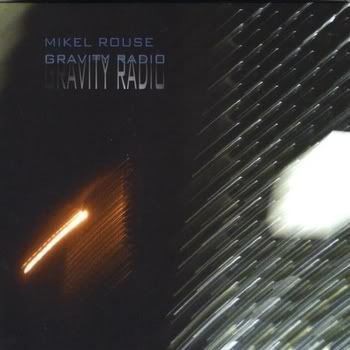
Mikel Rouse: Silence of Sound
Gravity Radio is a work from 2009, and things are changing in Rouse land. Rouse’s voice now has some grit to it, and that makes it a more emotive instrument. Silence of Sound is actually moving towards a more conventional song structure of verse and chorus; there is even a guitar solo. Once again, there is an African feel to the rhythm part, but the guitar plays a countermelody.
I read in the New York Times a review of a recent performance of Gravity Radio, and that was the original inspiration for this post. Rouse calls it a song cycle, and there are six radio news reports interspersed between the songs. These reports change every time Gravity Radio is performed, to keep current with the latest news. There is also a visual component of course. What I take from the songs on the album and what I know about how it is performed live is that Gravity Radio is all about people trying to sort through the noise of daily life and make connections with each other. The title Silence of Sound is at once a play on Sounds of Silence and a reiteration of this idea of attempted connections amid the noise. For me at least, the lyrics bear that out.
****************************************************************
So now I have brought you almost up to date on the career of Mikel Rouse. My next post will finish the job. It will be a review of Rouse’s most recent album. Stay tuned.






1 comments:
This is a great article. Without feeling rushed you've given us a pointed encapsulation of Rouse's music. I particularly like Silence of Sound.
But it's also another excellent example of how a talented artist can live below the radar of popular consciousness and create quality work after work.
Post a Comment